November’s Nonresidential Construction Starts +2% M/M, -8% Y/Y, & -2% YTD
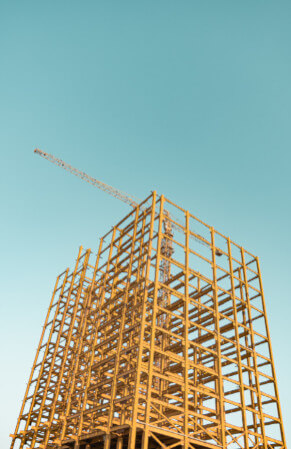
November Light on Megaprojects
ConstructConnect announced today that November 2021’s volume of construction starts, excluding residential work, was $30.4 billion (see shaded green box, bottom of Table 8 below), an increase of +1.7% compared with October 2021’s level of $29.9 billion (originally reported as $28.8 billion).
![]()
Solar Panel Repair
Tampa Solar Company can work out a plan to save your solar panel and save you money. Depending on the size of your energy system, you may need to spend an hour or two repairing the cracks. In some cases, it is not possible to repair a damaged panel, but the repairs can be more affordable if you can solve the problem yourself. A professional repair person can help you determine what kind of repairs are necessary.

If the panels are not performing at peak efficiency, getting the solar panel repaired by a professional is a great idea. Although the panels are durable, they often last far past their lifespan. They can even reach 50 years or more. When replacing solar panels, do so only when they have broken beyond repair or have started to lose efficiency as their end of life approaches. The price of a new panel can add up quickly.
A professional repair technician will charge $100 per hour for loose connection repair. The reason for this is that if a connection is loose, the power reserve capacity will shift. The technician will need to cut through the soft silicone in order to reach the power cells. If the problem is serious enough, they may need to un-solder and re-solder the equipment. An hour of labor can cost $200 to $300. When it comes to getting your solar panel repaired, it is always a better idea to use a licensed technician.
When it comes to solar panel repair, you should always consult the manufacturer. You can also ask the manufacturer for a warranty. It is likely that you are covered by a warranty if your solar panels were purchased from the original manufacturer. If your solar panel is broken beyond repair, do not hesitate to replace it. It is only when it is no longer functioning well that you should replace it. If it is not performing well, it is probably time to replace it.
A professional will be able to take the panels off your roof or fix them if you’ve purchased them new. It is also possible to have a solar panel removed if it’s damaged beyond repair. In many cases, solar panels are made to last for as long as possible. You can even purchase a warranty for your solar panels. If you’re not sure if your warranty covers solar panels, contact a company that does.
Getting your solar panels repaired isn’t as expensive as you may think. You can hire a professional to handle your repair work. The costs of this type of repair are usually very affordable. If you’re worried about the costs, you can check the warranty’s conditions and see what you can do. It’s best to contact the manufacturer of the solar panel you purchased. You can even ask them to give you a quote for repairs.
Some solar panel wiring problems can be fixed. A technician will cut the wires if they’re too small. Other issues include oxidation, corrosion, and improper connections. For instance, a loose connection can cause the power reserve capacity of the solar cells to shift. Luckily, it is a simple procedure that won’t cost you a lot of money. However, if you’re not comfortable with this, you should consider hiring a professional.
Another common problem with solar panels is corrosion. This is a common cause of the replacement of parts. If you’re worried about the effects of corrosion, you can clean your solar panels regularly. A special brush can help you clean your solar panels. Make sure to clean them thoroughly to remove any excess dirt. Use cleaning agents to remove corrosion. You can do this yourself if you’re unsure of how to clean the panels. But if you don’t have any experience, you’ll need to contact a professional.
It is possible to do the repairs yourself, but it’s a good idea to hire a professional for the task. A licensed, professional electrician will have extensive electrical engineering experience and will be able to identify potential problems during the cleaning. As a result, they will be able to diagnose the problem and prevent it from happening again. It’s also a good idea to schedule routine maintenance for your solar panels. By doing this, you’ll be sure that a qualified individual is always checking and fixing potential issues.
How to Win More Construction Bids in 2022
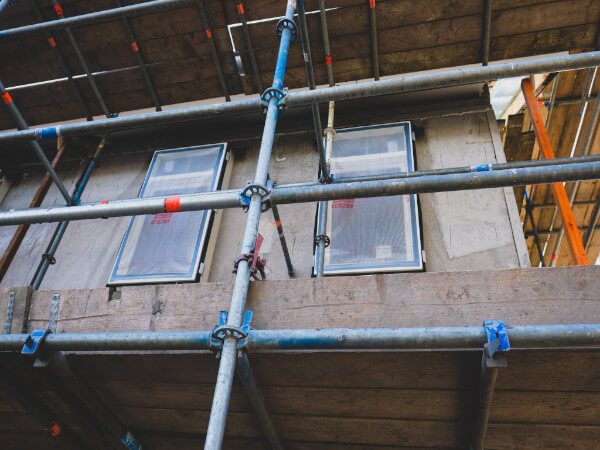
Are you looking to win more construction bids in 2022? Maybe you’re planning to grow and scale your construction business in the new year or perhaps you’re just looking to be more efficient in your estimating and bidding process to improve your bid-hit ratio.
![]()
Did you miss our previous article…
https://www.arizonasolarsociety.com/?p=1651
Construction Worker Deaths Decreased in 2020

Good news. The number of fatal occupational injuries for the construction industry declined in 2020. The number of construction worker deaths in 2020 was 1,008, a 5.3% reduction from the 1,061 fatal work injuries in 2019.
![]()
Did you miss our previous article…
https://www.arizonasolarsociety.com/?p=1647
Quarterly U.S. Put-in-Place Construction Forecasts Report, Winter 2021-2022
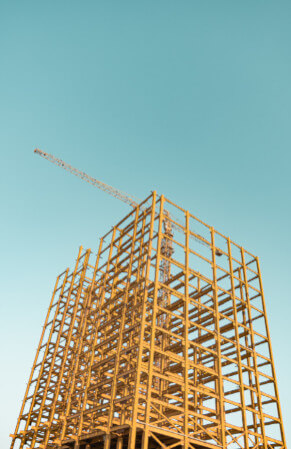
To tackle a +6.8% year-over-year CPI inflation rate, the Federal Reserve has stated it will be pursuing QT rather than QE in the year ahead, quantitative tightening rather than easing, and that there may be as many as three upwards adjustments to interest rates. On the residential construction side, the expectation of higher interest rates may counterintuitively speed up groundbreakings for a while as prospective new homeowners try to beat the financing cost increases.
![]()
Did you miss our previous article…
https://www.arizonasolarsociety.com/?p=1643
Construction Estimating: 4 Winning Tips to Improve
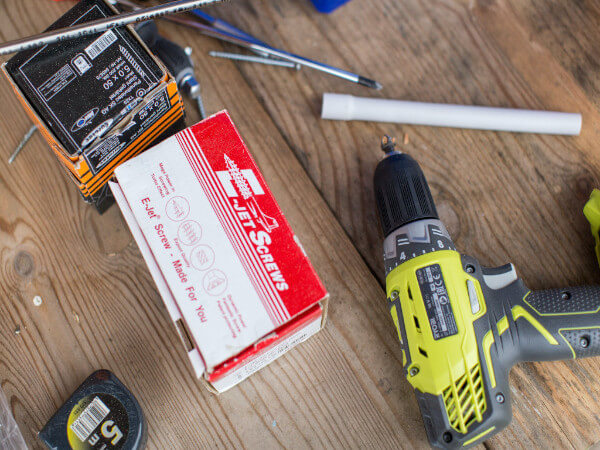
In an era of rising costs and new technology, here’s how to bring more accuracy to construction estimating.
When it comes time to kick off a new construction job, an accurate estimate is the first step toward project success. The best approach to the construction estimating process begins with a thorough understanding of the project, along with a team of estimators who are deeply familiar with the nuances of quality construction estimating. For contractors and business owners, this stage of the project can have a pronounced impact on your bottom line. According to a survey conducted by QuickBooks and TSheets, one in four construction companies would go out of business if they made just two or three inaccurate estimates.
As a resource, here are a few tools that will guide your team toward a successful construction estimating process, creating opportunities for new business and exceptional client relationships.
What is a Construction Estimate?
While construction estimates are hardly always accurate to the cent, successful projects start with accurate and detailed estimation efforts. If not, there can be ethical and even legal risks. For instance, in March, the SEC launched a federal probe into two leading construction contractors to uncover why their estimates were inaccurate.
The initial construction estimating process for large-scale projects usually begins with a specific team, known as estimators. They estimate the project by gathering proposals, plans, specifications, and related documents.
Overall, an estimate is the total price of the project, which includes all expenses, like materials and labor. It’s also important to note that there’s a common misconception around the definition of a bid vs. an estimate. A bid is a finalized offer in order for the construction project to proceed. In a bid, a contractor often specifies a construction price and project timeline. Usually, an accurate estimate is set before you place a bid.
The Cost Estimating Process and Terms to Know
Similar to the estimate vs. bid distinction, there are several terms to understand and keep in mind throughout the estimation process. In construction, these nuances are important to not only explain your approach to the client, but to speak internally with vendors, partners, and others in the industry. Simply put, speaking the “same language” can help minimize confusion and mistakes.
First, there’s a quantity takeoff. This is when the cost estimator accurately identifies and develops the required materials for the project. This step is crucial, as without an accurate takeoff, there will be inaccuracies in the project. Next, the estimator will use their experience to estimate the labor hours required to complete the project. A key factor in determining the labor hours is correctly identifying the relevant labor rates, which are the basic wages for all team members. The cost estimator will also consider overtime work and extra hours.
As the estimation process progresses, the team will begin to collect material prices and equipment costs. Both of these vary significantly, as the cost of a given material fluctuates greatly depending on market demand and supply, the quantity needed, the cost of transportation to the building site, and exchange rates. More importantly, the cost of equipment will include the capacity of the equipment and the cost differential if the equipment needs to be rented. In the unprecedented time of COVID-19, as shipping and logistical operations are delayed, this has become imperative to uncover and represent factually.
The estimator will also gather all subcontractor costs, including the price of the labor, materials, and equipment required by additional specialty contractors on the project. Lastly, to ensure all costs are covered in an accurate estimate, indirect costs need to be considered. This can include temporary on-site utilities, land acquisition, design fees, and office support.
4 Ways to Improve Accuracy in Construction Estimating
As technology continues to guide the latest and greatest in construction, the process of construction estimating has drastically improved due to more innovative tech platforms.
1. Embrace the cloud
One key industry innovation is the cloud-based estimation tool. This allows an estimator to utilize a 2D or even 3D model to predict the needs of a construction project. The cloud-based approach provides more accuracy by uncovering the true engineering needs of a project. This accuracy, in turn, offers the client a fuller picture of the estimation, and gives the estimation team a helpful tool to better present the construction job.
Another cloud-based approach involves executing a takeoff within the cloud for an estimation. Integrating the takeoff into the cloud allows for more security and collaboration among team members. It also eliminates the headaches of using license-based tools.
In addition, you can implement company-wide data standards by setting up project templates in the cloud that include takeoff types and classification systems. All of which enables consistency across your teams and project data.
And lastly, when estimators have access to the right information at the right time—i.e. centralized in the cloud—they’re capable of generating a competitive bid. Leveraging a cloud-based document management system for your quantification workflows helps ensure that all your estimators are working from the latest issued drawings and models. A major benefit there is that they are not missing critical information to create a competitive estimate.
2. Turn to automation
A truly innovative approach to estimation is known as the automated approach to a takeoff. When takeoffs are automated, estimators are freed up from the tedious task of manually counting supplies. They can easily visualize quantities in 3D to understand scope, complexity, and design intent. For example, one company was able to leverage a 3D model to get the correct number of doors needed for a project in a matter of minutes—a process that would have taken them over a day using a 2D drawing.
Automation as a tool is key in the preconstruction phase, as it allows a contractor to jumpstart the launch of a new job seamlessly, without getting bogged down by the nuances of an ordinary takeoff.
More and more, automation is offering firms a competitive advantage. They’re able to work faster and take on jobs that may have BIM requirements they weren’t able to meet in the past. In other words, automation allows contractors to access a whole new set of customers. And with the time-savings you get from automation, you can bid on more jobs and win more work.
3. Collaborate early
Teamwork is an essential first step in construction estimating, and this process fails if there’s not a culture of transparency and collaboration between the contractor, client, and estimator. Justin Davis, Executive Vice President of Preconstruction, Estimating, and Business Development at Walker Engineering explains the importance of collaboration during the estimation process this way: “Customers expect and trust [contractors] to fill in all the gaps, make sure that they’ve got their costs covered, and make sure that when we sit in a room, there’s transparency.”
Allowing teams to manipulate data and have visibility into scope removes oversight or double-ups on takeoffs. This is best accomplished in cloud-based takeoffs where data is centralized. With streamlined teamwork as a top priority, the goal should be to make estimating a collaborative process.
4. Leverage connected data
Lastly, the advent of data connectivity is the cornerstone to improving the accuracy of your construction estimate. When data lives in silos, information can get lost, which increases the likelihood of inaccurate estimating. More importantly, centralized data and information ensures more accuracy and facilitates a seamless transition from one project phase to the next.
It is truly a new era in creating an accurate and reliable construction estimate—contractors and business owners just need to understand the technology and platforms available at their fingertips.
Making the Most of your Construction Estimate
In construction, there’s nothing more important than delivering a quality, outstanding project that exceeds the expectations of your clients. This all begins with the estimate. And to build your estimate, you’ll need to identify the right quantities with an accurate takeoff. Your quantities, of course, will affect both cost and schedule, which will also be reflected in your estimate.
As the industry continues innovating, there are several resources to make your estimation process more accurate and helpful for your clients. Most importantly, an accurate estimate helps maintain your bottom line, as mistakes can be costly and sour reputations for future projects.
Looking to save time during estimating? Bid Board Pro saves the average estimator 8 hours per week by eliminating manual entry and consolidating everything needed to manage bids in one, easy-to-access place. Learn more.
The post Construction Estimating: 4 Winning Tips to Improve appeared first on Digital Builder.
Did you miss our previous article…
https://www.arizonasolarsociety.com/?p=1637
Mid-December Economic Nuggets, With a Focus on Chemistry
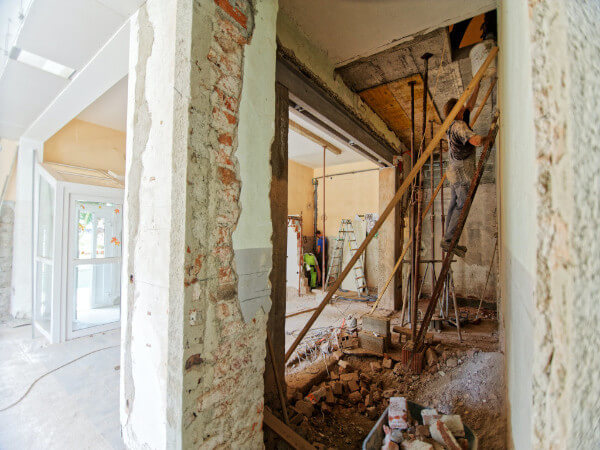
Estimates of U.S. real (i.e., after inflation) gross domestic product (GDP) growth for this year have generally been revised down recently, by well-known forecasting agencies, from a range between +6% and +7% to a cooler +5%. Supply shortages have cut into output levels in many industrial sectors. And bad news about coronavirus variants is putting a damper on reopening efforts.
![]()
Did you miss our previous article…
https://www.arizonasolarsociety.com/?p=1633
5 Construction Technology Trends Australian Contractors Should Invest in Now
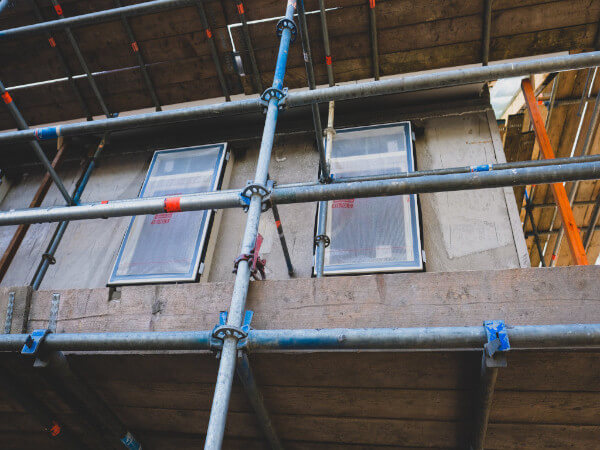
As the construction industry continues to adapt, connect and scale, these are the 'must-have' innovations.
Did you miss our previous article…
https://www.arizonasolarsociety.com/?p=1630
The Future of Work is Now: Is the Construction Industry Ready?
In early 2021 Deloitte was commissioned by the Autodesk Foundation to help identify the labour markets most vulnerable to technological disruption in the Asia Pacific region. The report, The Future of Work is Now: is APAC Ready? Identifies those most at risk and proposes interventions which can be scaled and adapted to different circumstances across our region.
The current COVID-19 pandemic, and the challenges it has brought, has accelerated digital trends. Heavy restrictions have been faced in Melbourne and Sydney throughout the year, and this has caused us to consider:
- New models of work throughout the economy
- Specific to construction, new methods of connecting with each employee and team from the office to onsite across the workforce, and through our supply chain
- The demand drivers for more employees; however, there has been a real dichotomy with restricted activities as this has made it hard to find workers
Figure 1: Number of people employed in Australia (‘000s)

Source: Australian Bureau of Statistics, Deloitte Access Economics
Figure 2: Job ads index, 100=decade average to Nov-19

Source: Australian Bureau of Statistics, Deloitte Access Economics
Considering the last point, finding and retaining skilled workers has been an ongoing concern. The number of job advertisements as reported by the Australian Bureau of Statistics and Deloitte Access Economics have risen highly in all sectors and stayed at high levels, and unemployment is at an all-time low in Australia.
Figure 3: Number of unemployed persons per job vacancy

Source: Australian Bureau of Statistics, Deloitte Access Economics
This year we have experienced a dual labour market where some could not work due to restrictions, while some are adjusting to new roles, and many businesses still could not fill vacancies. In October this year, Infrastructure Australia released their Infrastructure Market Capacity report which stated that up to 105,000 well-paid jobs risk being unfilled by 2023 due to global competition for workers.
Infrastructure Australia forecasted a shortage of 70,000 engineers and architects, 15,000 structural and civil trades, and 19,000 Project Managers. This makes the sector one of the hardest hit, with looming skills gaps on public projects across the country, putting more pressure on already-stressed budgets and time frames. This impact has a knock-on effect to other parts of the commercial construction industry as the sector aims to become an industry of first choice for entrants.
Automation in Construction
The Future of Work report covers three core components:
- Impacts of automation going beyond likelihood of automation
- The readiness for automation and how countries are prepared, and
- Initiatives to take action as one size does not fit all, particularly across the APAC region
Construction topped the list as the industry most likely to be hardest hit by the coming wave of automation. The industry had the highest proportion of routine, manual tasks, with a high potential for automation.
Figure 4: Impact Index result by industry

It’s also noted that Australia is the most prepared and second least at-risk country from automation. Its investment in its future workforce is a significant contributor to this result. However, as noted above, the future workforce is still at risk. Continued investment is needed, particularly in upskilling, to stay in this position and help ensure our country remains competitive in the region.
Figure 5: Potential impact of automation and preparedness, by country

To be in the best position to benefit from automation, individuals, businesses, countries and regions need to focus on three key opportunity areas. These are identified as foresight and mindset, skills and learning, and access and inclusion.

Based on The Future of Work research, there are four key insights about how to address the skills gap:
- While training for highly specialised skills will be essential, it’s more important to shift the skills development focus to foundational, analytic, problem solving, creative and collaborative capabilities that can be transferred from role to role – because the shelf life of specific skills will continue to shrink.
- The pace of change means workers need to engage in continuous skills upgrades – that’s how they will ensure stability, and it will require them imagining and navigating a very different career path.
- We must shorten the distance between learning and work, which means embedding learning into the workplace by enabling workers to study new skills and experience different environments.
- Addressing systemic challenges: government, industry and academia need to work better together to help people get the right skills to fill these open jobs.
Addressing the skills and capabilities gaps
There are opportunities available that organisations like Autodesk can address with industry to close the gaps identified in the research, taking into account current market conditions. At Autodesk, we approach it with three things in mind:
- What TRAINING can we put in place to allow people to constantly upgrade their skills?
- What TOOLS help shorten the distance between training and work?
- And how should private sector, public sector, education institutions, among others, PARTNER to address the systemic challenges in collaboration?
Training
To support training, Autodesk launched our new learning and credentialing platform at Autodesk University last year. The platform is designed to make training personalised and transformative. Workers can get credentials on their terms and timelines and build personalised learning pathways that help them develop the skills they need.
Autodesk credentials make learning more accessible, measurable, and relevant for customers. Industry recognised certifications help workers to market their job readiness. Whilst the sector has foundational entry-level qualifications, the opportunity for partnerships that support the business with micro-credentials enables practical courses that can address the needs of the company.
Tools
Autodesk Command Map is designed to watch how you use the Autodesk products, highlight the areas in which you’re proficient and the areas you need to improve on. It also offers benchmarks against industry standards to help you focus in the right areas and to use the tool to its full potential to reap the rewards of the investment.
Collaboration
This takes many forms and is arguably the most complex because it takes many different parties to address the systemic problems. According to the World Economic Forum, a collaborative effort could reach 77% of all workers that need reskilling – versus just 25% if the private sector were to do this alone.
The Future of Work is Now
At Autodesk, we believe that automation technology, including artificial intelligence, will be required to help businesses and society meet the demands of our growing urbanisation and global population. We recognise that technological change will drive transformation – and we are committed to helping companies and their employees adapt and thrive. We believe employees prosper by adopting a mindset of continuous learning, acquiring the most in-demand skills and securing the most fulfilling roles. We are committed to collaborating with employers, the start-up community, the vocational education and training sector, universities and government organisations to advance workforce adaptability, as we invest in solutions and policies that complement employers and employees to adjust in an ever changing environment.
Autodesk can support you and your organisation. The Future of Work report can be accessed here.
The post The Future of Work is Now: Is the Construction Industry Ready? appeared first on Digital Builder.
Autodesk to Acquire Cloud Based Estimating Company ProEst
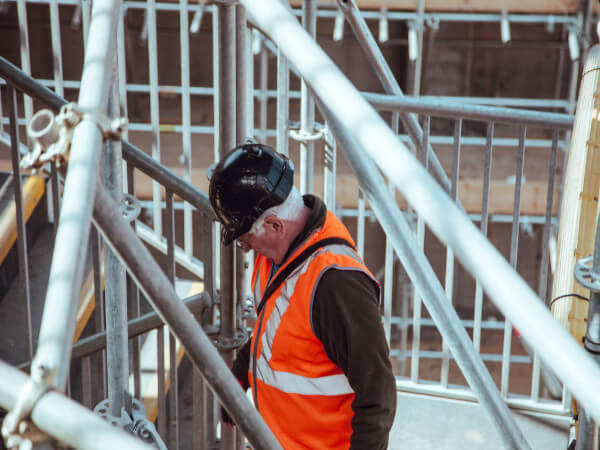
ProEst will join Autodesk to strengthen its preconstruction offering and connect the project cost lifecycle within Autodesk Construction Cloud
SAN FRANCISCO, Calif., Dec. 16, 2021 – Autodesk, Inc. (NASDAQ: ADSK) today announced that it is acquiring ProEst, a cloud-based estimating solution that enables construction teams to create estimates, perform digital takeoffs, generate detailed reports and proposals and manage bid-day processes. Autodesk plans to integrate ProEst with Autodesk Construction Cloud, a comprehensive construction management platform connecting teams, data and workflows across the entire building lifecycle. The acquisition will strengthen Autodesk Construction Cloud’s preconstruction offerings and empower construction teams to manage all their critical preconstruction and construction workflows on one platform.
ProEst, whose customers include Geisinger, O’Brien Construction, Vantis and Oswald, translates project scope quickly and easily, turning drawings, specifications and models into material, labor and equipment costs. As a result, teams are not only able to supercharge the estimation process and build stronger bids, but also minimize project risks and heighten their chances of winning work. With ProEst’s cloud-based solution, customers can also access estimating information from anywhere, at any time, and import third-party cost databases to streamline estimation workflows. The acquisition of ProEst will complement Autodesk Construction Cloud’s best-in-class cost management capabilities and allow teams to track costs against estimates and provide greater visibility to increase the probability of project success.
“We pride ourselves on delivering quality projects safely, within budget and in a timely manner,” said Luis Berumen, vice president of innovation and technology, Bartlett Cocke General Contractors. “Autodesk Construction Cloud helps us manage our projects by enhancing collaboration across various phases and workflows and adding ProEst’s cloud-based estimating capabilities to the mix will further our ability to deliver quality projects efficiently.”
“ProEst enables us to produce estimates faster, consistently and more accurately throughout the design process and in collaboration with our partners, thereby improving overall efficiency” said Manny Innamorato, chief information officer, New York City School Construction Authority. “As a public entity, our mission is to build and modernize New York City’s schools in a responsible, cost-effective manner while still achieving the highest standards of excellence in safety, quality and integrity. With Autodesk Construction Cloud and ProEst now joining forces, we look forward to connecting our estimation data more seamlessly with our downstream construction workflows so we can stay on track and deliver on our mission in a more streamlined manner.”
ProEst will join Autodesk Construction Cloud’s existing portfolio of solutions, further enabling teams to reduce rework, improve productivity, increase automation and accelerate project delivery. Autodesk Construction Cloud solutions include:
- Autodesk Takeoff: empowers estimators to perform 2D and 3D quantification workflows.
- Autodesk BIM Collaborate: enables project teams to align on and execute design intent by managing design collaboration and coordination workflows from a single solution.
- Autodesk Build: connects project, cost, quality, safety and field collaboration workflows in a solution that is easy to deploy, adopt and use.
- BuildingConnected: centralizes and streamlines the bidding process to help teams discover trade partners, identify the right subcontractors and solicit and compare bids. BuildingConnected is Autodesk Construction Cloud’s builders network, featuring over one million construction professionals. The solution also encompasses TradeTapp, which uses machine learning and AI technology to qualify contractors and mitigate project risk.
“Estimation significantly impacts downstream construction workflows, but is often a disconnected and manual process, which creates room for errors that can lead to cost and schedule issues later in a project lifecycle,” said Jim Lynch, senior vice president and general manager of Autodesk Construction Solutions. “Our acquisition of ProEst will allow construction teams to connect accurate estimates with the rest of their project data to minimize the risk of cost and schedule overruns and drive successful project outcomes. ProEst shares our vision for digital transformation in construction and we look forward to bringing their leading estimating solution to Autodesk Construction Cloud.”
“Our goal has always been to reimagine the construction estimating process and offer the most advanced functionality possible,” said Jeff Gerardi, ProEst founder and CEO. “We have enabled teams to move away from paper documents and spreadsheets and, thanks to our cloud-based platform, break down on-premise software silos with seamless integration. Autodesk’s vision of connecting construction from end to end is one we fully believe in, and we’re excited to join an outstanding preconstruction offering to deliver on that vision.”
In recent years, Autodesk has made significant investments in construction technology innovations, including Aurigo Software’s capital planning tools and Bridgit’s workforce allocation and resource planning solution. Autodesk also acquired Assemble, BuildingConnected, PlanGrid and Pype in acquisitions totaling more than $1.1 billion.
Business Outlook
The transaction is subject to customary closing conditions and is expected to close during Autodesk’s fourth quarter of fiscal 2022, ending January 31, 2022. The acquisition will have no material impact on Autodesk’s fourth quarter and fiscal year 2022 guidance presented on November 23, 2021.
About Autodesk
Autodesk is changing how the world is designed and made. Our technology spans architecture, engineering, construction, product design, manufacturing, media and entertainment, empowering innovators everywhere to solve challenges big and small. From greener buildings to smarter products to more mesmerizing blockbusters, Autodesk software helps our customers to design and make a better world for all. For more information visit autodesk.com or follow @autodesk.
Media Contact
Stacy Doyle
503-330-6115
[email protected]
Investor Relations Contact
Simon Mays-Smith
415-746-0137
[email protected]
Safe Harbor Statement:
We may make statements regarding planned or future development efforts for our existing or new products and services. These statements are not intended to be a promise or guarantee of future delivery of products, services or features but merely reflect our current plans, which may change. Purchasing decisions should not be made based upon reliance on these statements. The Company assumes no obligation to update these forward-looking statements to reflect events that occur or circumstances that exist or change after the date on which they were made.
Autodesk, the Autodesk logo, Autodesk BIM Collaborate, Autodesk Build, Autodesk Construction Cloud and, BuildingConnected are registered trademarks or trademarks of Autodesk, Inc., and/or its subsidiaries and/or affiliates in the USA and/or other countries. All other brand names, product names or trademarks belong to their respective holders. Autodesk reserves the right to alter product and services offerings, and specifications and pricing at any time without notice, and is not responsible for typographical or graphical errors that may appear in this document. © 2021 Autodesk, Inc. All rights reserved.
The post Autodesk to Acquire Cloud Based Estimating Company ProEst appeared first on Digital Builder.